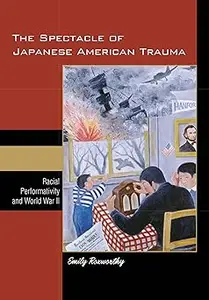
Free Download Emily Roxworthy, "The Spectacle of Japanese American Trauma: Racial Performativity and World War II"
English | 2008 | pages: 242 | ISBN: 0824832205 | PDF | 1,9 mb
In The Spectacle of Japanese American Trauma, Emily Roxworthy contests the notion that the U.S. government's internment policies during World War II had little impact on the postwar lives of most Japanese Americans. After the curtain was lowered on the war following the bombings of Hiroshima and Nagasaki, many Americans behaved as if the "theatre of war" had ended and life could return to normal. Roxworthy demonstrates that this theatrical logic of segregating the real from the staged, the authentic experience from the political display, grew out of the manner in which internment was agitated for and instituted by the U.S. government and media. During the war, Japanese Americans struggled to define themselves within the web of this theatrical logic, and they continue to reenact this trauma in public and private to this day.
The political spectacles staged by the FBI and the American mass media were heir to a theatricalizing discourse that can be traced back to Commodore Matthew Perry's "opening" of Japan in 1853. Westerners, particularly Americans, drew upon it to orientalize―disempower, demonize, and conquer―those of Japanese descent, who were characterized as natural-born actors who could not be trusted. Roxworthy provides the first detailed reconstruction of the FBI's raids on Japanese American communities, which relied on this discourse to justify their highly choreographed searches, seizures, and arrests. Her book also makes clear how wartime newspapers (particularly those of the notoriously anti-Asian Hearst Press) melodramatically framed the evacuation and internment so as to discourage white Americans from sympathizing with their former neighbors of Japanese descent.
Roxworthy juxtaposes her analysis of these political spectacles with the first inclusive look at cultural performances staged by issei and nisei (first- and second-generation Japanese Americans) at two of the most prominent "relocation centers": California's Manzanar and Tule Lake. The camp performances enlarge our understanding of the impulse to create art under oppressive conditions. Taken together, wartime political spectacles and the performative attempts at resistance by internees demonstrate the logic of racial performativity that underwrites American national identity. The Spectacle of Japanese American Trauma details the complex formula by which racial performativity proved to be a force for both oppression and resistance during World War II.
